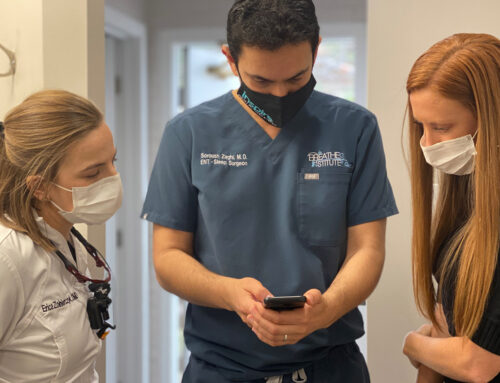Are tongue-tie releases and craniosacral therapy complementary to each other or not?
I’ve been hearing a lot more about craniosacral therapy in recent years, and for good reason. The first reason is that this interesting treatment modality seems to be becoming more popular.
The second reason is that tongue-ties have become much better known. So, working with tongue-tied patients has become a major part of my practice. Once I explain the way a tongue-tie can restrict and affect far more than just the tongue, some of my patients quickly make the connection that certain kinds of manual therapy and bodywork may be of benefit before and after the tongue-tie release procedure.
What Is Craniosacral Therapy?
Wikipedia defines craniosacral therapy as follows:
“Craniosacral therapy is a form of bodywork or alternative therapy using gentle touch to palpate the synarthrodial* joints of the cranium. A practitioner of cranial-sacral therapy may also apply light touches to a patient’s spine and pelvic bones.”
* A fibrous joint in which the union of bony elements is by continuous intervening fibrous tissue, which makes little motion possible; the three types are suture, syndesmosis, and gomphosis. Called also immovable or synarthrosis.
Think of the skull as being many individual bones rather than one solid mass. There are sutures that run between each bone and these can be subtly manipulated, allowing for tiny movements and adjustments.
Tongue-Tie Releases and Craniosacral Therapy
Why would craniosacral therapy be helpful to someone having a tongue-tie released?
Well, the way I see it is that anything that helps relieve tension in the face, jaws, neck, and head, and lead to better alignment of the body has to be a good thing in the context of a tongue-tie release.
A tongue-tie is basically a restriction of the tongue, which is a vitally important part of the body and all of the muscles and fascia that connect to it. The restriction affects the tongue’s functionality, and this will have flow-on effects to other parts of the body.
For example, tongue-tied patients often have a lot of tension in their face, neck and jaws that resolves almost immediately after their release. Others have forward head posture that also resolves after the release. I’ve seen this a lot in my patients over the years.
If the tongue-tie is affecting the muscles and structures of the body to that degree, it seems logical that bodywork techniques could be helpful. It really just makes a lot of sense to me to of give the body as much support and help as possible before and after the release procedure.
Craniosacral Therapy And Babies
I’ve know a number of practitioners and patients alike who’ve given great feedback about tongue-tie releases and craniosacral therapy in babies. This approach seems to be particularly effective with babies because the sutures that run between the bones of the skull aren’t nearly as fixed as they are in adults. The old cliché is that a baby’s bones are like clay – they’re easily molded and manipulated.
Babies also can’t do the exercises I prescribe before and after a tongue-tie release like older children and adults can. In my experience, I’ve found that craniosacral therapy is an excellent complimentary modality for babies.
Craniosacral Therapy And TMJ Problems
I also think craniosacral therapy can be effective in adults who struggle with TMJ issues. This applies whether we’re discussing tongue-tie releases or just in general.

If adults suffer from pain and tension caused by TMJ issues, then craniosacral therapy can be a great way to relieve some of that. Of course, when dealing with a tongue-tie, I’d have to say that myofunctional therapy is the most important part of preparing for the release and recovering from it.
You have to retrain and strengthen the muscles of the tongue to help it regain full functionality post-surgery and undo any dysfunctions. Craniosacral therapy alone won’t do that, nor will any form of bodywork, manual therapy, or myofascial release. But in conjunction, there can be a strong synergistic effect.
Is craniosacral therapy a must do? I always tell my patients that when it comes to tongue-tie releases and craniosacral therapy, it isn’t an essential part of my tongue-tie release program. I leave it entirely up to them but I’m always pleased when a patient does extra work to optimize the results of their tongue-tie release, whether that’s craniosacral therapy or any other kind of bodywork.
Here’s a video from my YouTube channel on this subject:




